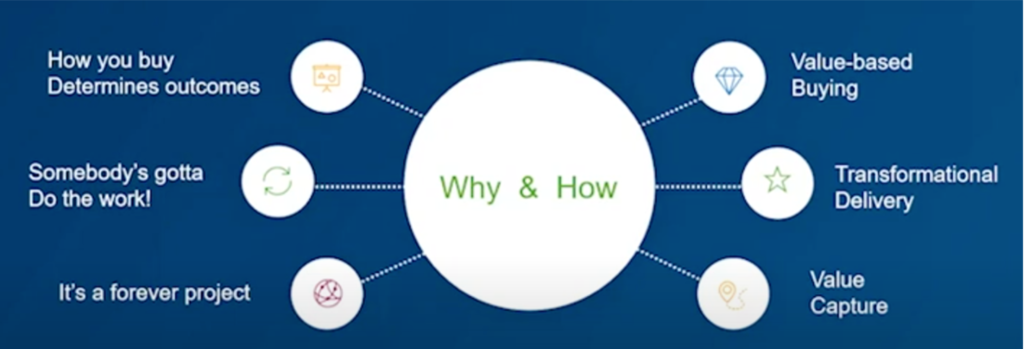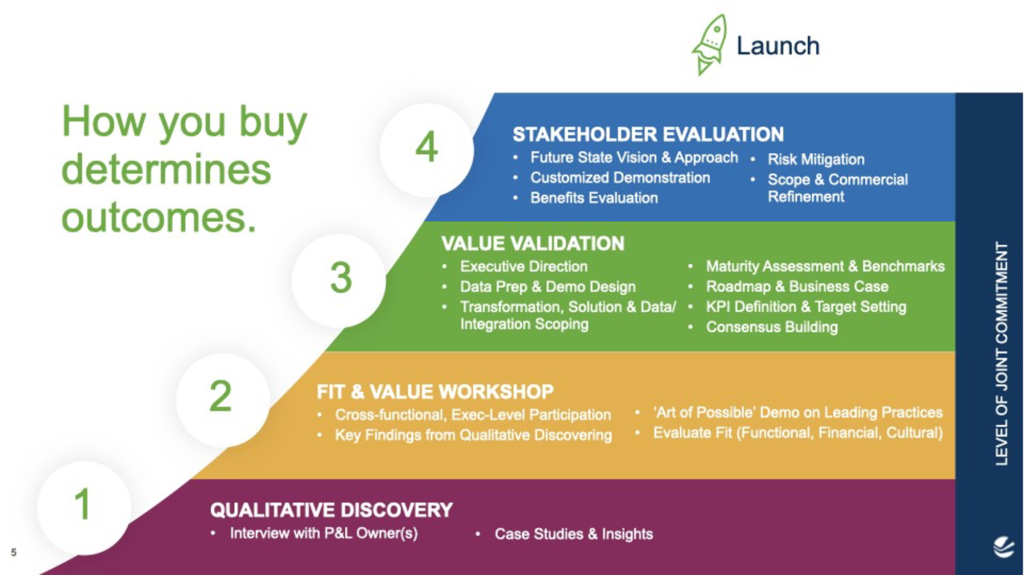
There’s a genuine need for transformation in business, and it’s certainly been accelerated by COVID-19. But to accomplish it requires navigating around significant business risks and making meaningful investments.
According to an Accenture report, industrial companies had spent over $100 billion on scaling digital innovations to drive new experiences and efficiencies. Yet 78% of them struggled to reach expected earnings. A mere 22% saw a return on their digital investments that exceeded expectations
The reason that happens is because many companies think that achieving Commercial Excellence is mainly a technology problem. But in doing so, the way they set up and execute their initiatives are fundamentally flawed.
What’s needed to correct this? The application of value-based, outcome-centric methods in pursuit of three overarching goals:
- De-risk Initiatives: It’s not exaggeration to say that people put themselves at risk in undertaking large-scale commercial initiatives requiring large investments and cross-functional execution.
- Accelerate Time-to-Value: There’s a significant business case associated with transformation initiatives, and implementation delays involve sizable costs in terms of lost benefits – from hundreds of thousands to perhaps millions of dollars per month.
- Achieve Exceptional Outcomes: We’re not in search of adequate or “good enough” outcomes, but truly exceptional and transformational ones.

Why Do Companies Struggle with Transformation?
As we’ve said, it’s because they treat the process as if they’re buying a tool:
- They post an RFP…
- An evaluation panel watches provider demos…
- They make a decision that is often focused on product bells-and-whistles or cost…
- Not based on the value a provider delivers in actually helping fulfill transformation imperatives.
In other words, how you buy a solution determines the outcomes you achieve – or fail to achieve – down the road.
The Steps in a Value-based Buying Process

There are four natural steps in a value-based buying process:
- During the Qualitative Discovery phase, the would-be provider sits with the P&L owner/stakeholder(s) to provide the expected case studies and insights to justify their offering.
- The Fit & Value Workshop requires cross-functional, leadership-level participation, where key findings from the first phase are reviewed, the potentiality of the solution is explored/demonstrated in greater depth, and there’s a strong evaluation of how it will fit into the organization.
- During Value Validation, there’s even more granular examination of how the potential solution will deliver value over the long haul.
- This is capped by final Stakeholder Evaluation, where a highly customized demo based on previous inputs to the provider is conducted, benefits are assessed, and a decision is reached.
Two Principles at Play
There are two important principles at play that are designed into every step of a solid value-based buying process:
- There needs to be a collaboration between the buyer team, even at the executive level, and the provider: This involves a continual commitment and exchange of information and views. The more involved both parties are in this process, the more robust and accurate its outcome will be, with a higher level of ongoing commitment.
- Implementation begins now, not at launch: Many activities around areas such as change management and performance management commence during the buying process, not afterward,
In such a situation, the provider will build multiple successive workshops into the overall process, rather than wait for the “eleventh hour” before launch to address critical issues. This helps drive collaboration between customer and provider that leads to a much more defined and realistic future roadmap.
By moving from initial alignment through a series of collaborative workshops and touchpoints, the customer and users are set up to achieve better outcomes, more rapidly, turning them into transformational buyers who are delivering positive impacts with much greater speed.
Going Beyond Go-Live
Finally, it’s key to remember that the journey to Commercial Excellence doesn’t stop at launch. Commercial Excellence is, of course, a “forever project” that should see continuous improvement and agile adjustment over time.
A business is constantly evolving and will need to add new functionalities, components, or support service, may roll a solution out to new regions, or need to adapt it to new ways of working.
Webinar
Register Now for Our Growth + Profitability Summit Fall 2021
Be among the first to get all the event details, and then join us to capture exclusive insights from our global experts on Commercial Excellence and price optimization.

